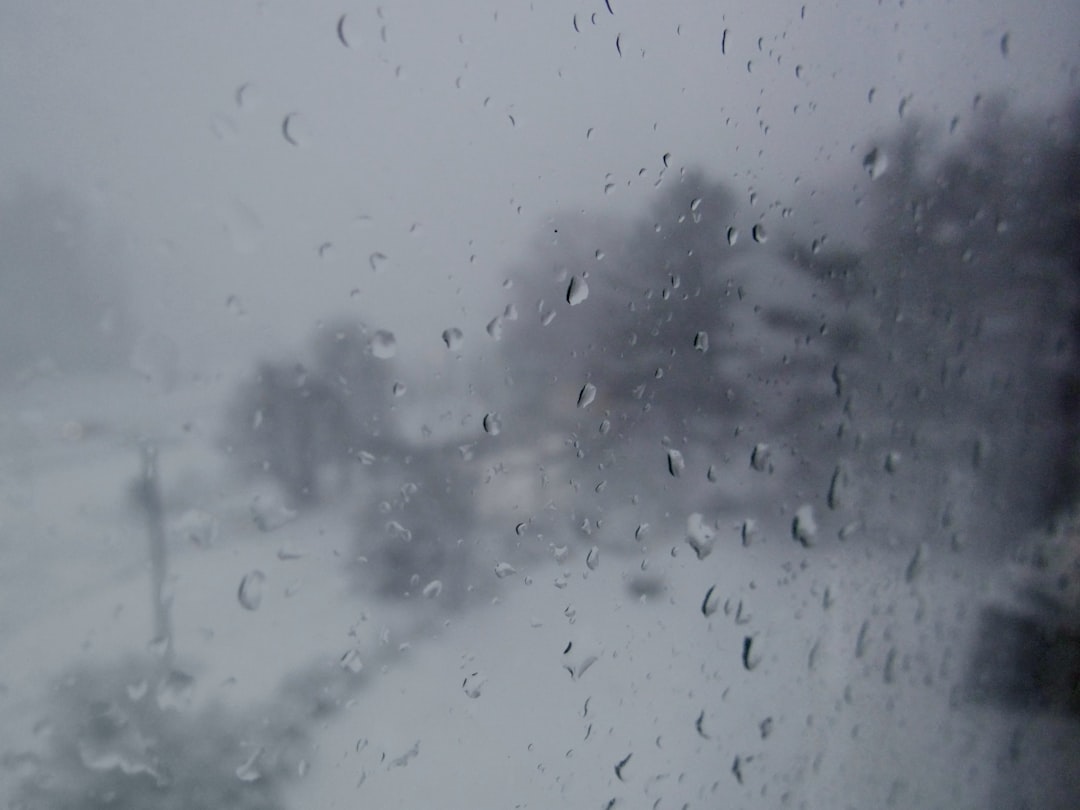The Drake Passage, a body of water situated between the southern tip of South America and Antarctica, is notorious for its unpredictable and often tumultuous weather. This maritime corridor is not only a vital route for vessels traveling to and from the Antarctic but also a region of significant scientific interest. The weather in the Drake Passage can change rapidly, influenced by a myriad of factors including ocean currents, wind patterns, and geographical features.
The unique climatic conditions of the Drake Passage are characterized by strong winds, high waves, and sudden storms. Mariners and researchers alike must be prepared for these challenges, as the weather can shift from calm to chaotic in a matter of hours.
As such, having access to accurate and timely weather forecasts is essential for anyone planning to traverse this formidable stretch of ocean. A 14-day weather forecast can provide valuable insights into expected conditions, helping travelers and researchers make informed decisions about their journeys.
Key Takeaways
- Drake Passage weather can be unpredictable and challenging to navigate.
- A 14-day forecast is crucial for planning travel and research in the Drake Passage.
- Factors such as wind, temperature, and pressure systems affect the weather in the Drake Passage.
- Historical weather patterns can provide insight into potential future conditions in the Drake Passage.
- Technology plays a vital role in forecasting and understanding weather patterns in the Drake Passage.
Understanding the Importance of a 14-Day Forecast
A 14-day weather forecast serves as a critical tool for those venturing into the Drake Passage. This extended forecast allows individuals to anticipate weather patterns and prepare accordingly, which is particularly important in a region known for its volatile conditions. By examining a two-week outlook, travelers can identify potential windows of favorable weather for crossing the passage, as well as periods when conditions may be less than ideal.
Moreover, a 14-day forecast provides insights into long-term trends that may not be apparent in shorter forecasts. For instance, it can highlight patterns such as the likelihood of storms or calm periods, enabling travelers to plan their itineraries with greater precision. This foresight is invaluable not only for ensuring safety but also for optimizing research schedules and maximizing the effectiveness of scientific missions in the region.
Factors Affecting Weather in Drake Passage

Several factors contribute to the unique weather patterns observed in the Drake Passage. One of the most significant influences is the confluence of ocean currents, particularly the Antarctic Circumpolar Current. This powerful current flows from west to east around Antarctica and interacts with other currents in the region, creating complex weather systems that can lead to rapid changes in conditions.
The mixing of cold polar waters with warmer currents can result in fog, rain, and even snow, all of which can impact visibility and navigation. In addition to ocean currents, atmospheric conditions play a crucial role in shaping the weather in the Drake Passage. The region is often subject to low-pressure systems that can bring strong winds and heavy precipitation.
These systems can develop quickly and move through the area with little warning, making it essential for travelers to stay informed about current conditions. Furthermore, the geographical features surrounding the passage, including mountains and islands, can influence local weather patterns by creating microclimates that may differ significantly from broader forecasts.
Historical Weather Patterns in Drake Passage
| Year | Average Temperature (°C) | Precipitation (mm) | Wind Speed (km/h) |
|---|---|---|---|
| 2000 | -2.5 | 800 | 40 |
| 2005 | -1.8 | 750 | 45 |
| 2010 | -2.0 | 780 | 42 |
| 2015 | -2.3 | 820 | 38 |
A review of historical weather patterns in the Drake Passage reveals a landscape marked by extremes. Over the years, records have shown that this region experiences some of the roughest seas on the planet, with waves reaching heights of over 30 feet during storms. Historical data indicates that certain times of year are more prone to severe weather, particularly during the Southern Hemisphere’s winter months when storms are more frequent and intense.
Understanding these historical trends is vital for anyone planning a journey through the Drake Passage. By analyzing past weather events, travelers can gain insights into what to expect during their trip. For instance, they may find that late spring and early summer offer relatively calmer conditions compared to the winter months.
This knowledge allows individuals to make informed decisions about when to embark on their voyages, enhancing both safety and comfort.
The Role of Technology in Forecasting Drake Passage Weather
Advancements in technology have revolutionized the way weather forecasts are generated and disseminated. In the context of the Drake Passage, satellite imagery and sophisticated modeling techniques have significantly improved the accuracy of forecasts. Meteorologists now have access to real-time data from various sources, including buoys and ships equipped with advanced sensors that monitor ocean conditions.
These technological innovations enable forecasters to analyze complex weather systems more effectively and provide timely updates on changing conditions. For those planning to navigate the Drake Passage, this means access to more reliable forecasts that can inform decision-making processes. Additionally, mobile applications and online platforms allow travelers to receive real-time updates while at sea, ensuring they remain aware of any sudden changes in weather that could impact their journey.
Potential Impacts of Weather on Travel and Research in Drake Passage

The weather in the Drake Passage can have profound implications for both travel and research activities. For adventurers seeking to cross this challenging body of water, adverse weather conditions can lead to delays or even cancellations of planned voyages. High winds and rough seas pose significant risks to vessels, making it imperative for captains and crews to heed weather warnings and adjust their plans accordingly.
For researchers conducting scientific studies in the region, unpredictable weather can disrupt fieldwork and data collection efforts. Storms may hinder access to research sites or compromise equipment deployed in the water. Consequently, understanding the forecast is essential for maximizing research opportunities while minimizing risks associated with inclement weather.
By planning around anticipated conditions, scientists can enhance their chances of successful data collection and contribute valuable insights into the unique ecosystems found within the Drake Passage.
Tips for Planning a Trip through Drake Passage Based on the 14-Day Forecast
When planning a trip through the Drake Passage, utilizing a 14-day forecast can significantly enhance safety and enjoyment. First and foremost, travelers should familiarize themselves with seasonal trends and historical weather patterns specific to their intended travel dates. This knowledge will help them identify optimal times for crossing when conditions are likely to be more favorable.
Additionally, it is advisable for travelers to monitor updates regularly as their departure date approaches. Weather conditions can change rapidly in this region, so staying informed about any shifts in forecasts is crucial. Travelers should also consider flexibility in their itineraries; being open to adjusting plans based on real-time weather updates can make a significant difference in overall experience.
How to Interpret and Use the 14-Day Forecast for Drake Passage
Interpreting a 14-day forecast requires an understanding of various meteorological terms and indicators. Travelers should pay attention to key elements such as wind speed, wave height, precipitation chances, and temperature ranges. Each of these factors plays a role in determining overall conditions at sea.
For instance, high wind speeds combined with significant wave heights may indicate rough seas that could pose challenges for navigation. Conversely, lower wind speeds and moderate wave heights suggest calmer conditions conducive to safe travel. By analyzing these components within the context of their planned journey, travelers can make informed decisions about when to set sail or whether to delay their departure.
Comparing Different Weather Models for Drake Passage
There are several weather models available that provide forecasts for the Drake Passage, each utilizing different methodologies and data sources. Comparing these models can offer travelers a more comprehensive view of expected conditions. Some models may focus on short-term predictions while others provide long-range outlooks; understanding these differences is key to making informed decisions.
Travelers should consider consulting multiple sources when reviewing forecasts for the Drake Passage. By cross-referencing information from various models, they can identify consistent trends or discrepancies that may warrant further investigation. This approach not only enhances confidence in decision-making but also allows travelers to better prepare for potential challenges they may encounter during their journey.
Real-Time Updates and Adjustments to the 14-Day Forecast
One of the most significant advantages of modern forecasting technology is the ability to receive real-time updates on changing weather conditions. As travelers navigate through the Drake Passage, they should remain vigilant about monitoring updates from reliable sources. These updates can provide critical information about sudden shifts in weather patterns that may affect their journey.
In addition to checking forecasts before departure, travelers should also utilize mobile applications or onboard communication systems that allow them to receive alerts while at sea. Being proactive about staying informed enables individuals to make timely adjustments to their plans if necessary—whether that means altering course or delaying travel until conditions improve.
Making the Most of the 14-Day Forecast for Drake Passage
In conclusion, understanding and utilizing a 14-day forecast is essential for anyone planning a journey through the unpredictable waters of the Drake Passage. By familiarizing themselves with historical patterns, monitoring real-time updates, and interpreting forecasts effectively, travelers can enhance their safety and overall experience while navigating this challenging maritime corridor. The importance of preparation cannot be overstated; being aware of potential weather impacts allows individuals to make informed decisions that prioritize safety without sacrificing adventure or research opportunities.
As technology continues to advance, access to accurate forecasting will only improve—empowering travelers and researchers alike to explore one of the most fascinating regions on Earth with confidence.
If you’re planning a journey through the Drake Passage, it’s crucial to stay informed about the weather conditions over the next 14 days. The Drake Passage is notorious for its unpredictable and often harsh weather, which can significantly impact travel plans. For more detailed insights and updates on the weather patterns in this region, you might find this related article on MyGeoQuest helpful. It provides valuable information that can assist in preparing for the challenging conditions you might encounter. For further reading, check out the article on MyGeoQuest.
WATCH NOW! Drake Passage: Earth’s Deadliest Waters Revealed
FAQs
What is the Drake Passage?
The Drake Passage is the body of water between the southern tip of South America and the northern tip of the Antarctic Peninsula. It is known for its rough seas and challenging weather conditions.
What is the weather like in the Drake Passage?
The weather in the Drake Passage is characterized by strong winds, high waves, and rapidly changing conditions. It is known for its stormy and unpredictable weather, with the potential for extreme cold temperatures.
How long does it take to cross the Drake Passage?
The crossing of the Drake Passage typically takes around 2-3 days, depending on the weather conditions and the route taken by the vessel.
What is the weather forecast for the Drake Passage for the next 14 days?
The weather forecast for the Drake Passage for the next 14 days can vary, but it is important to expect a mix of strong winds, rough seas, and potential stormy conditions. It is advisable to check the forecast regularly and be prepared for changing weather patterns.
What should I pack for a trip through the Drake Passage?
When traveling through the Drake Passage, it is important to pack warm and waterproof clothing, including insulated layers, waterproof outerwear, and sturdy footwear. It is also advisable to bring seasickness medication and any necessary personal items.
